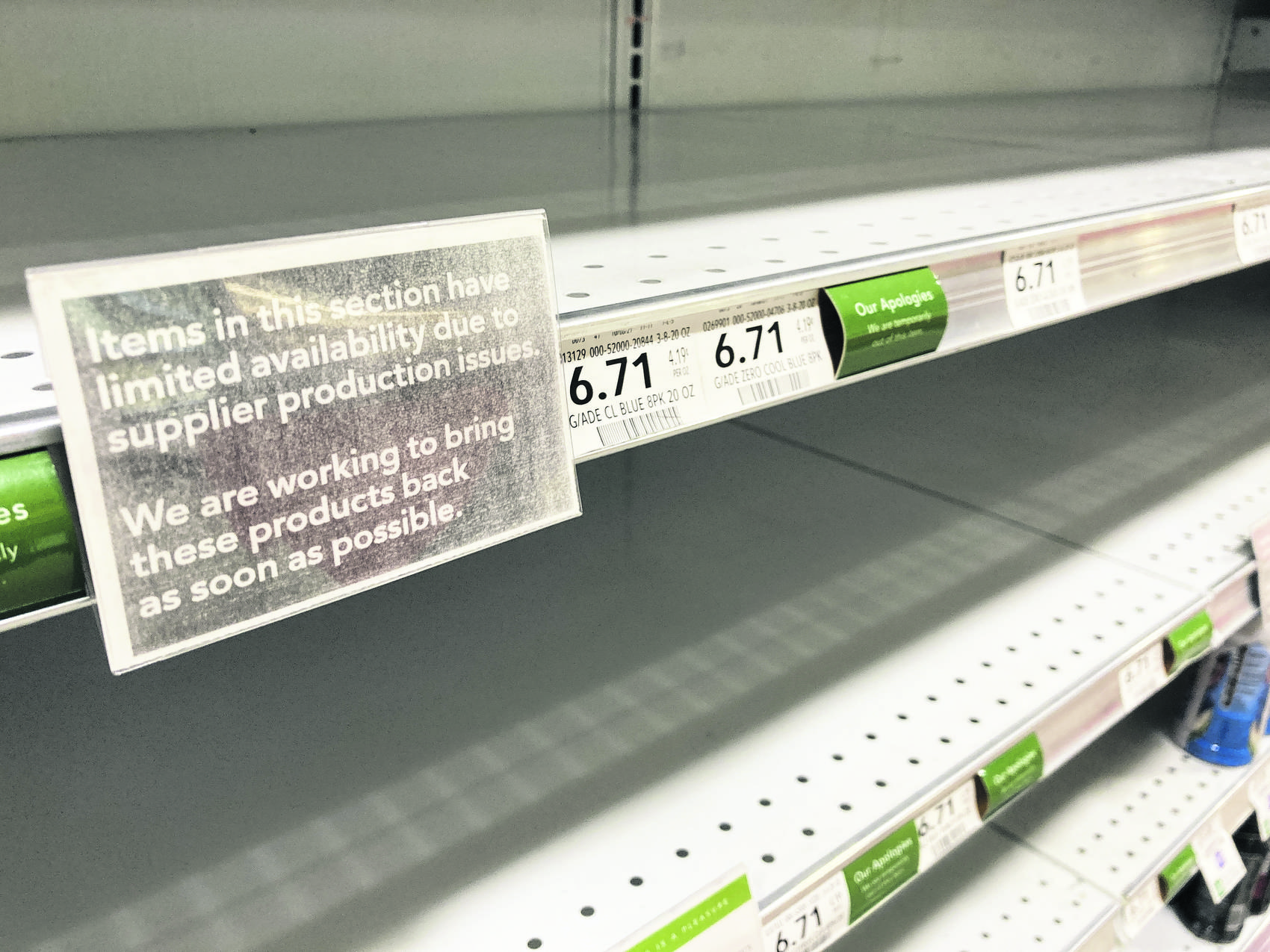
Wilfredo Lee AP
Shelves, empty “due to supplier production issues,” are once again becoming a common sight. But this time there are multiple reasons.
It’s barely 2022 and already social media is swamped with pictures of empty grocery shelves.
Some of the culprits are the same as in the early days of the pandemic, and some can be chalked up to new problems bumping up against old ones.
Here are some of the reasons your favorite items may be out of stock.
Virus surge: The omicron variant surge has meant more work for stores – more deep cleaning, a return to masking and social distancing – just as more employees can’t work and are calling out due to illness or quarantine.
In a Monday call with 27 food industry chief executives, Geoff Freeman, CEO of the industry organization Consumer Brands Association, said more employee absences were reported in the past two weeks than in all of 2020.
“That’s remarkable,” he said. “Throw on top of that being down 120,000 truck drivers nationally, and another 10 percent of workers being absent at food manufacturing facilities, and you’re putting a lot of pressure on the system all at one time.”
Access to rapid coronavirus tests is also making it challenging to get employees back to work swiftly.
The National Grocers Association has requested its grocers be prioritized for testing supplies from federal and state governments, and they’ve also asked for flexibility with new federal vaccination and testing mandates with the aim of minimizing further workforce disruptions, said Jim Dudlicek, the trade group’s communications director. With the prevalence of the omicron variant, even among vaccinated workers, many grocery chains are operating stores with less than half of their normal workforce.
“While there is plenty of food in the supply chain, we anticipate consumers will continue to experience sporadic disruptions in certain product categories as we have seen over the past year and a half due to the ongoing supply and labor challenges,” Dudlicek said.
Winter weather: Winter storms dumped more than a foot of snow across parts of the Mid-Atlantic just after the New Year, and sweeping weather systems have made road conditions difficult in many parts of the country in the past two weeks.
For example, the 20-plus-hour traffic jam last week on I-95 near Stafford, Virginia, paralyzed a fair number of grocery delivery semi trucks.
“The winter months are always challenging,” said Doug Baker, vice president of industry relations for FMI, a food industry organization. “But we’ve seen weather patterns that we’re not used to in terms of frequency and magnitude, from the West Coast to the East Coast.”
In addition to weather delaying the delivery to grocery stores, Baker said bad weather also influences consumer psychology, which played into some items becoming out of stock.
“There are certain products people ritually buy when there is an impending weather event,” Baker said. “And then when people see images of stores low on stock, it’s not out of the ordinary for people to buy two of something instead of one, just in case.”
And with more than 5,000 schools delaying their reopening this month due to the omicron surge and storms, families are feeling a greater urgency to lay in supplies of bread, milk, meat and cereal to make up for meals not eaten at school.
Supply chain snarls: Supply chain problems are no longer just about shipping containers sitting in ports or out at sea, waiting to be unloaded. They are also about the slowing of the production of goods that the United States imports.
In China and the United Kingdom, some municipalities have once again shut down factories and thus slowed orders for certain ingredients and food products for U.S. imports.
Fruits and vegetables have seen fewer instances of shortfalls and supply problems than other food categories, but currently there are some empty shelves that are more about food safety, with recent recalls from the Food and Drug Administration.
More people eating at home: A combination of factors from rising inflation to surging omicron cases are prompting households to eat at home more – once again meaning grocery stores are being inundated with shoppers.
Grocery sales climbed more than 8% in December, according to national retail sales tracker Mastercard SpendingPulse. Stores are still restocking from that surge and have been struggling to keep shelves fully stocked in several categories since the beginning of this year, according to data firm IRI’s consumer packaged goods supply index.
“We’re seeing a lot of restocking and replenishment going on,” said Jessica Dankert, vice president of supply chain for Retail Leaders Industry Association.
The increased hesitancy around dining out because of the omicron surge has also contributed to more demand at grocers.
Inflation has also been influencing consumer behavior, driving them to eat more at home and travel and eat out less.
Grocery prices rose 6.4% over the past 12 months ending in December, the largest increase since 2008, according to a Bureau of Labor Statistics index of prices. And for subcategories such as beef, prices rose a 20.9 percent.